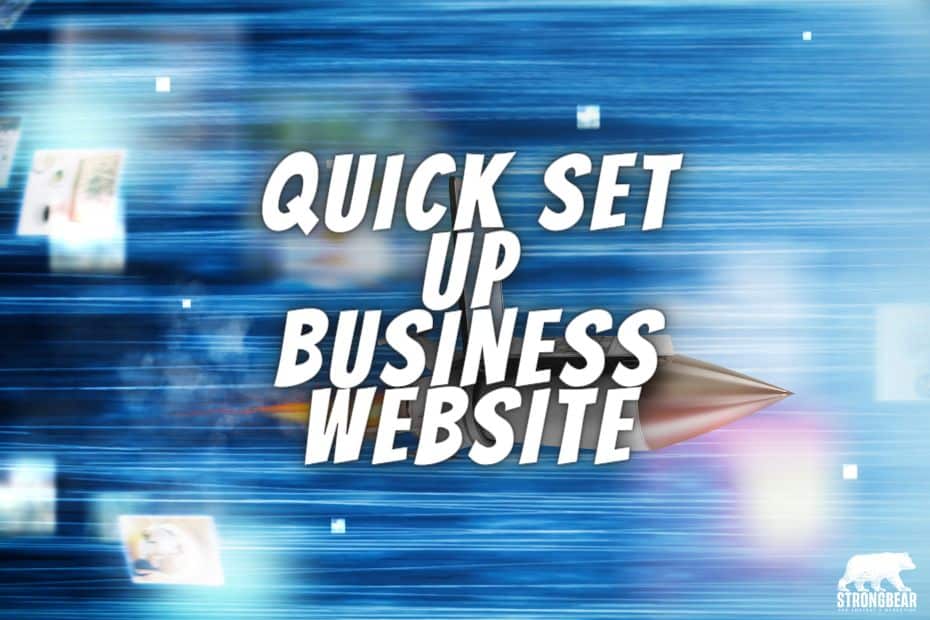In our fast-paced, digital world, having a business website is not a luxury—it’s a necessity. However, the thought of setting up a website can often seem daunting. Concerns about time, cost, and a lack of technical skills can often deter business owners. This article aims to dispel these concerns by offering a quick and effective guide to setting up your business website. A quick set up business website is certainly in reach!
Planning Your Website
Before you dive into creating your website, it’s crucial to spend some time planning. The first step is defining the purpose of your website. Is it to sell products or services? To provide information? Or to generate leads? Understanding your website’s purpose will guide its design and structure.
Next, determine your target audience. Your website should be designed with your audience in mind, ensuring it resonates with them and meets their needs.
Lastly, plan your website structure or sitemap. This includes deciding the pages you’ll have and how they’ll be organized. A clear and intuitive structure will make your site easier to navigate, improving the user experience.
Choosing the Right Platform
There are various platforms you can use to build your website. Popular ones include WordPress, Squarespace, Wix, and Shopify for e-commerce sites. Each has its pros and cons.
For example, WordPress is highly customizable but has a steeper learning curve. Squarespace is user-friendly but offers less flexibility. Wix is great for beginners but may lack advanced features needed by larger businesses. Shopify is perfect for online stores but may be overkill for a simple informational site.
Choose the platform that best suits your needs, technical skill level, and budget. You can find out more about choosing the best website building tools for a small business website here.
Setting Up Your Website
Once you’ve chosen a platform, you’ll need to purchase a domain name. This is your website’s address on the internet, so choose a name that represents your business well.
Next, set up hosting. Some platforms, like Squarespace and Wix, include hosting. For others, like WordPress, you’ll need to purchase it separately.
Then, install your chosen website builder if necessary and select a theme. Most builders offer a range of themes, which are like the blueprint for your website’s design. Choose one that aligns with your brand and offers the features you need.
Essential Pages and Features
At a minimum, your website should have a Home page, an About page, a Services or Products page, and a Contact page. If you’re selling products or services directly from your site, you’ll also need e-commerce features like product pages, a shopping cart, and a payment gateway.
A blog or news section can be a great way to provide updates and valuable content to your audience. Don’t forget legal pages like a Privacy Policy and Terms of Service, especially if you’re collecting user data or selling products.
Optimizing Your Website
Once your website is set up, optimize it for search engines and users. This includes using keywords in your content, writing descriptive meta tags, and including alt tags for images.
Ensure your site is mobile-responsive, as more than half of web traffic now comes from mobile devices. Also, check your site’s speed and make any necessary improvements. A slow site can deter visitors and hurt your search engine rankings.
If you want to find out more about optimizing your website, download our SEO website checklist and Page Structure Guide.
Maintaining Your Website
Setting up your website is just the first step—you’ll also need to maintain it. This includes regularly updating your content, backing up your site, and monitoring its performance.
Maintaining a website also means regularly adding fresh content. This not only keeps your audience engaged but also signals to search engines that your site is active, which can improve your rankings.
Conclusion
Congratulations, you’ve taken the first step toward establishing your online presence! With this guide, you’re well-equipped to create a business website that effectively reaches your target audience, offers valuable content, and promotes your products or services. Remember, a website is not a static entity, but a dynamic one that requires regular updates and fresh content. You’ve embarked on a journey that, with continuous effort and optimization, can significantly boost your business’s visibility and success.
Remember, the digital world is increasingly mobile. As of 2023, over 50% of all web traffic comes through mobile devices (source). Ensuring your website is mobile-responsive is no longer an optional feature but a necessity.
So, don’t let the fear of the unknown hold you back. The tools and platforms available today make the process of setting up a business website more straightforward than you might think. It’s time to take the plunge and create a website that your business deserves.
